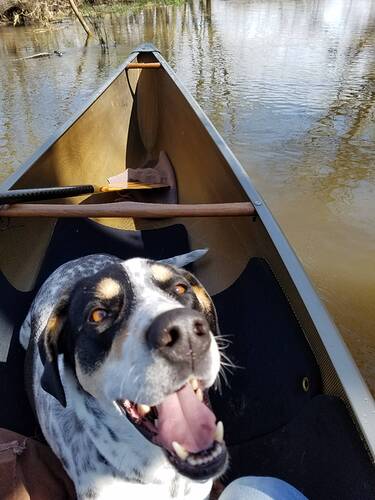I have done a fair bit of both kayaking and canoeing. All of my kayaks have been sit-in models used with spray skirts and double bladed paddles. I very rarely use a double bladed paddle in canoes.
Here are some of what I perceive to be the advantages of each craft, most of which have already been mentioned. My remarks regarding kayaks apply to SINKs paddled using a skirt and a double bladed paddle.
Kayaks:
Vastly superior for the open ocean and conditions in which tall waves and breaking surf are expected to be encountered.
Generally easier for beginners to progress to a level of competency. The strokes are all symmetrical and the the boats generally feel more stable because of the paddler’s lower center of gravity.
Easier to use in whitewater. Although I have greatly enjoyed paddling canoes in whitewater, it is much easier to remain dry and warm in a kayak. Canoes take on water traversing large wave trains or in sustained rapids and become much more difficult to control. Kayaks can bust through waves and holes without taking on water. They are easier to surf with the double bladed paddle. Although I know some open boaters who claim canoes are easier to roll than kayaks, I have never found that to be the case. And even if you can roll up in an open boat, it will have a lot of water in it.
Kayaks catch a lot less wind. The double bladed paddle also allows for a higher stroke cadence for most people. Kayaks can be much more efficient in windy conditions or when one must pound out a lot of miles. Double bladed paddles can be used in canoes, but not all canoes are really suited for double bladding, and often the paddles have to be longer and heavier.
Canoes:
Much easier if one wants to paddle tandem. There are many lightweight tandem canoes available. There are good tandem kayaks, but they tend to be pretty heavy, very expensive, and the selection is more limited.
Better if you want to take along smallish children or dogs.
Easier to load and unload. Generally easier to portage. Canoes are the clear choice for canoe camping in lake country when multiple portages per day is often the norm.
Easier to move about in. Less claustrophobic for some. A canoe can generally be paddled successfully by individuals of quite different size. Not always true of a sit-in kayak.
Easier to enter and exit than a SINK.
More interesting to paddle. One typically uses a much greater panoply of strokes in canoeing.







